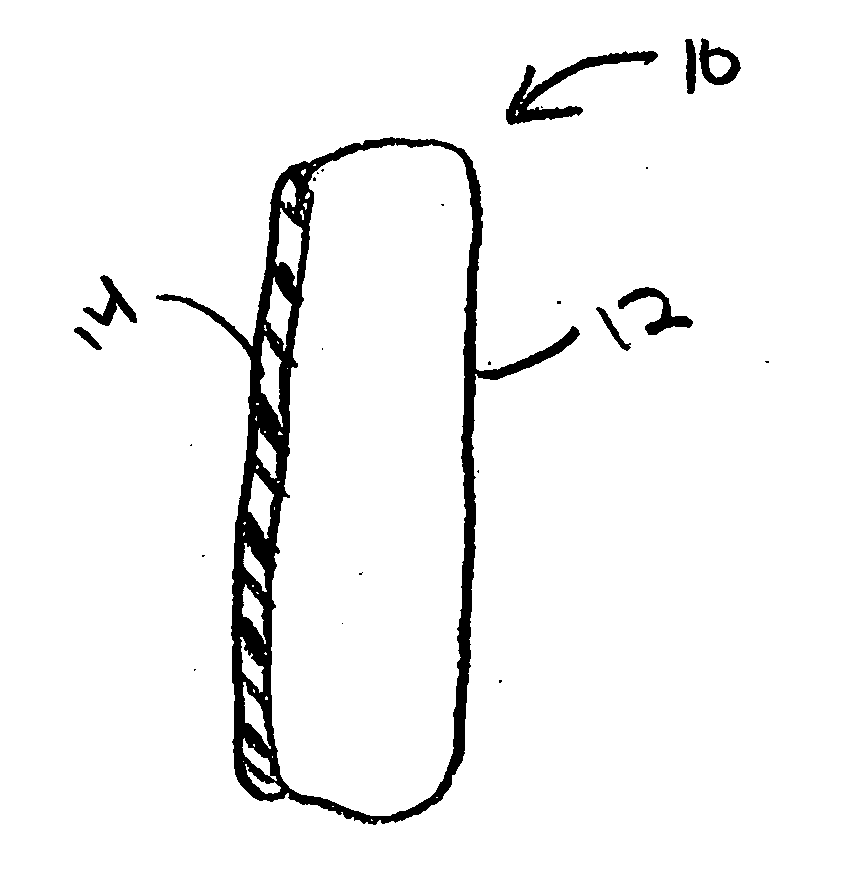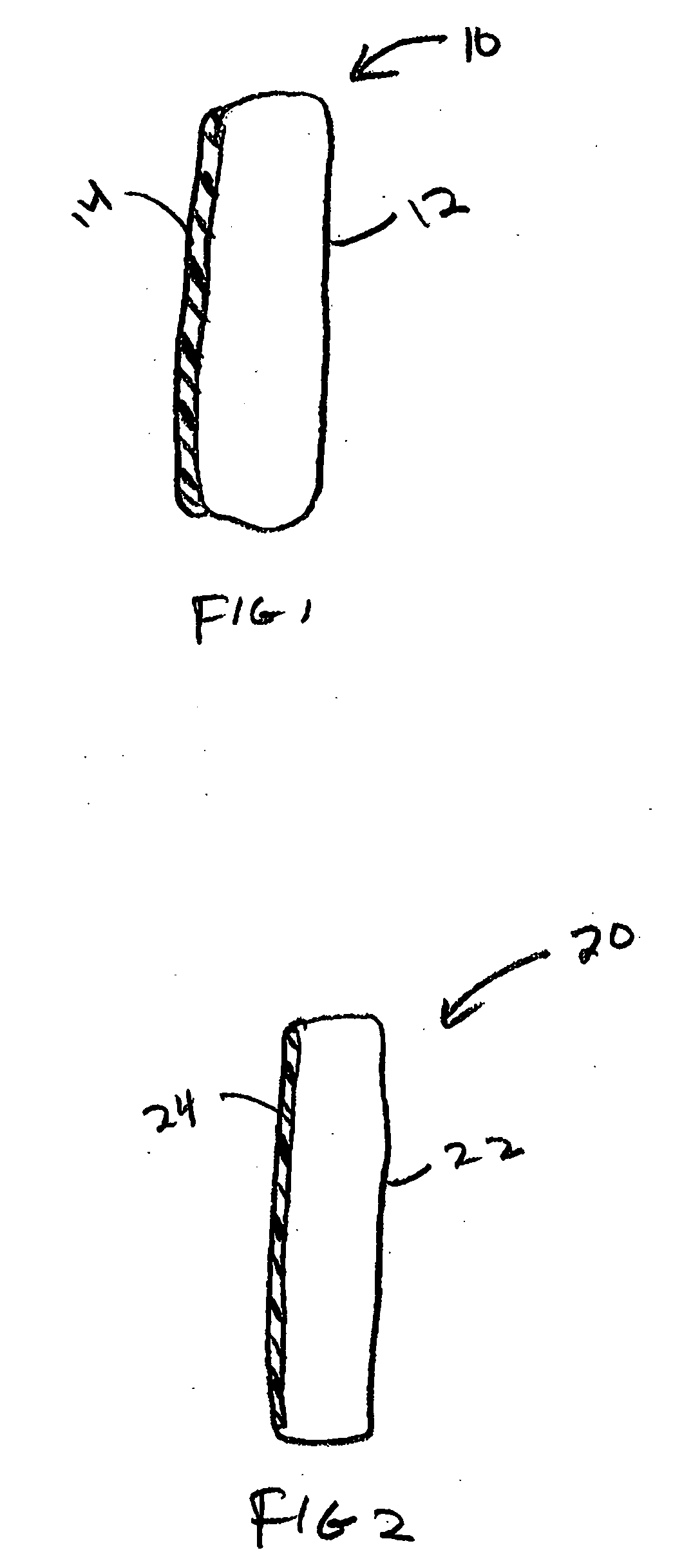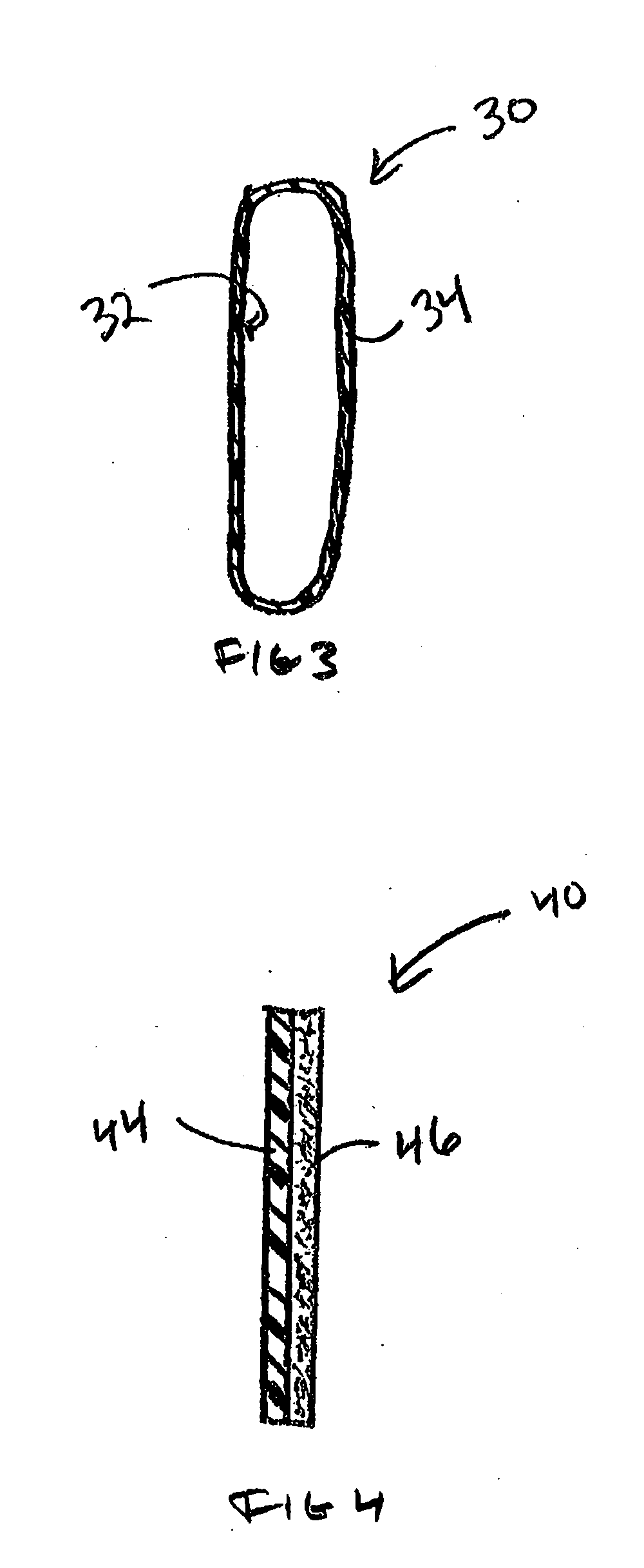Fire barrier protection comprising graphitized films
a graphite film and fire barrier technology, applied in the direction of synthetic resin layered products, other medical devices, metal-working apparatus, etc., can solve the problems of hazardous outgases, and achieve superior fire barrier protection, exceptional fire barrier performance, and dissipation of hea
- Summary
- Abstract
- Description
- Claims
- Application Information
AI Technical Summary
Benefits of technology
Problems solved by technology
Method used
Image
Examples
example 1
[0104]Test specimens were evaluated to determine the degree of fire barrier properties afforded in the form of sheets. Graphitized polyimide sheet (1 mil and 1.5 mil) and a sheet of NEXTEL 312 Flame Stopping Dot Paper from 3M Company were evaluated to determine their response to flame challenge. Graphitized polyimide sheet was prepared from a polyimide film obtained from 4,4′-diaminodiphenyl ether and pyromellitic acid dianhydride.
[0105]The specimens first were conditioned by holding the test specimens at 70+ / −5 degree F. and 55%+ / −10% relative humidity, for a minimum of 24 hours prior to testing. During the actual test, the test room is kept at 70+ / −5 degree F. and 55%+ / −10% relative humidity.
[0106]A flame assault was carried out under the following conditions:
[0107]A Bernz-O-matic TS-2000 torch was ignited, and the flame was set to a height of 2.5 inches, and allowed to reach a steady state.
[0108]A specimen of size 1.5 inch×2.5 inch was inserted into the flame, with its lower surf...
example 2
[0111]An identical test was carried out comparing a graphitized polyimide sheet having a thickness of 40 μm) with a sheet of natural graphite (240 μm). The observations for both graphite sheets were the same as above, except that after conclusion of the test it was noted that the natural graphite film formed a blister about 2-5 mm in a diameter on the surface of the sheet. However, flame was not observed to penetrate the natural graphite sheet. Graphitized polyimide sheet was prepared from a polyimide film obtained from 4,4′-diaminodiphenyl ether and pyromellitic acid dianhydride.
example 3
[0112]Samples used in evaluation are shown in Table 2. A polyimide prepared by polymerization of pyromellitic acid dianhydride with 4,4′-diaminodiphenyl ether was used as PI graphite. Five types of graphite sheets that have different thicknesses and include natural graphite sheets, and a commercial product, Nextel 312 Flame Stopping Dot Paper from 3M Company were used.
[0113]Burn-through test was carried out by a method described in Aircraft Materials Fire Test Handbook by Federal Aviation Administration Fire Safety (FAA), Chapter 24—Test Method To Determine the Burnthrough Resistance of Thermal / Acoustic Insulation Materials (Federal Register / Vol. 68, No. 147 / Thursday, Jul. 31, 2003 / Rules and Regulations). See FIGS. 6 to 9. FIGS. 6 and 7 show a 25 μm graphitized polyimide sheet at 0 min and 6 min, respectively. FIGS. 8 and 9 show a 40 μm graphitized polyimide sheet at 0 min and 6 min, respectively.
[0114]These photographs show that a high fire barrier effect is achieved since flame do...
PUM
| Property | Measurement | Unit |
|---|---|---|
| Temperature | aaaaa | aaaaa |
| Temperature | aaaaa | aaaaa |
| Weight | aaaaa | aaaaa |
Abstract
Description
Claims
Application Information
 Login to View More
Login to View More - R&D
- Intellectual Property
- Life Sciences
- Materials
- Tech Scout
- Unparalleled Data Quality
- Higher Quality Content
- 60% Fewer Hallucinations
Browse by: Latest US Patents, China's latest patents, Technical Efficacy Thesaurus, Application Domain, Technology Topic, Popular Technical Reports.
© 2025 PatSnap. All rights reserved.Legal|Privacy policy|Modern Slavery Act Transparency Statement|Sitemap|About US| Contact US: help@patsnap.com



